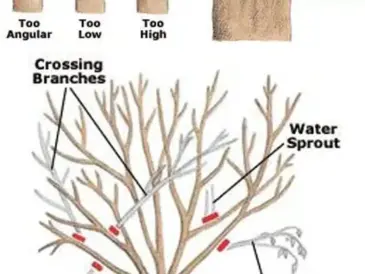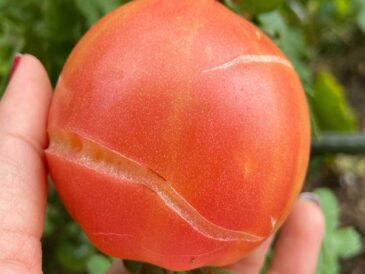Aloe vera is one of the most popular succulent plants in the world, and for good reason.
Not only does it make a beautiful, low-maintenance houseplant, but its thick, fleshy leaves are packed with soothing gel that’s used for everything from skin care to natural remedies.
But what if your aloe vera looks less like a plump, thriving succulent and more like a thin, droopy plant with flat, floppy leaves?
Thin aloe vera leaves are a common problem that frustrates many plant owners, but the good news is that it’s almost always fixable with the right care.
Why Are My Aloe Vera Leaves Thin and Droopy?
A healthy aloe vera plant should have thick, firm leaves that feel almost rubbery to the touch. When leaves become thin, limp, or wrinkled, it’s a sign that your plant isn’t getting what it needs.
Here are the most common reasons aloe vera leaves become thin:
1. Not Enough Sunlight
Aloe vera is a sun-loving succulent native to hot, sunny regions. In low light conditions, your aloe plant can’t photosynthesize properly.
Without adequate energy, it struggles to produce the thick, fleshy leaves it’s known for.
Signs of insufficient light:
- Leaves stretching or leaning toward the light
- Pale or faded leaf color
- Thin, floppy growth
2. Overwatering
Aloe vera stores water in its leaves to survive drought. When you water too often, the roots can’t dry out between waterings, leading to root rot.
In the early stages of overwatering, leaves may look mushy. Eventually, the plant will shrivel because damaged roots can’t absorb water effectively.
Signs of overwatering:
- Leaves soft and mushy at the base
- Black or brown spots on leaves
- An unpleasant smell from the soil
- Roots turning brown or black
3. Underwatering
While aloe plants are drought-tolerant, they still need some water to maintain thick leaves. Prolonged dryness can cause leaves to flatten and wrinkle as the plant uses up its stored water.
Signs of underwatering:
- Leaves thin and shriveled
- Curling or folding leaves
- Slow growth
4. Small or Crowded Pot
Aloe vera needs room to grow. If your aloe is root-bound, it can’t absorb enough water and nutrients to produce plump leaves. Overcrowded roots also restrict airflow and drainage.
5. Poor Soil
Heavy or compacted soil retains too much moisture, leading to root issues. Aloe vera needs fast-draining soil to keep roots healthy and leaves thick.
6. Temperature Stress
Aloe vera thrives in warm conditions. Cold temperatures or sudden drafts can slow growth and cause leaves to lose their plumpness.
How to Get Thick Aloe Vera Leaves
Now that you know why your aloe leaves might be thin, let’s talk about how to help your plant produce those thick, juicy leaves everyone loves.
1. Give Aloe Plenty of Sunlight
The single best thing you can do for thicker aloe leaves is to increase the amount of light your plant receives.
- Place your aloe vera near a bright, south-facing window.
- If growing indoors, provide at least 6 hours of direct sunlight daily.
- In low-light homes, supplement with a grow light.
- Outdoors, aloe prefers bright sun but will tolerate partial shade in extremely hot climates.
The more light your aloe receives (without scorching), the more energy it has to produce healthy, thick leaves.
2. Adjust Your Watering Routine
Proper watering is crucial for plump aloe leaves.
Here’s how to get it right:
- Allow the soil to dry out completely between waterings.
- Water deeply until water drains from the bottom of the pot.
- In summer, water about every 2-3 weeks. In winter, reduce to once every 4-5 weeks.
- Always check the soil moisture with your finger before watering.
If in doubt, it’s safer to underwater aloe vera than to overwater it.
3. Use the Right Soil
Aloe vera needs soil that drains quickly to prevent root rot. Regular potting soil is often too dense.
The best soil for aloe vera:
- Cactus or succulent soil mix
- Or make your own by mixing: 2 parts potting soil, 1 part perlite or pumice, 1 part coarse sand.
Good drainage ensures roots stay healthy and able to support thick, juicy leaves.
4. Choose the Right Pot
Aloe vera plants prefer a pot with plenty of room for root growth. A pot that’s too small can restrict the plant and keep leaves thin.
- Use a pot at least 1-2 inches wider than the current root ball.
- Always choose pots with drainage holes.
- Terracotta pots are excellent because they allow moisture to evaporate more quickly.
If your aloe has been in the same pot for years, consider repotting to refresh the soil and give roots more space.
5. Feed Sparingly
Aloe vera doesn’t require heavy feeding, but occasional fertilizer helps promote lush growth.
- Feed with a diluted cactus or succulent fertilizer once in spring and once in summer.
- Avoid high-nitrogen fertilizers, which can cause soft, weak leaves.
6. Protect From Extreme Cold
Aloe vera prefers warm temperatures between 60-80°F (15-27°C). Cold drafts or frost can cause leaves to become thin and stressed.
- Keep indoor aloe plants away from drafty windows in winter.
- If growing aloe outdoors in cooler regions, bring plants inside before temperatures drop below 50°F (10°C).
7. Keep It Clean
Dust and debris on aloe leaves reduce their ability to absorb sunlight. Gently wipe leaves with a damp cloth to keep them clean and photosynthesizing efficiently.
8. Be Patient
If your aloe leaves are thin due to poor care in the past, remember that recovery takes time. Aloe vera grows slowly, especially indoors.
- New leaves should appear thicker as conditions improve.
- Don’t remove older thin leaves unless they’re damaged or dying.
Troubleshooting Common Aloe Vera Problems
Even with good care, you may still encounter issues. Let’s tackle some of the most frequent questions about thin aloe leaves:
Why Are My Aloe Vera Leaves Wrinkled?
Wrinkled leaves often signal underwatering. Aloe stores water in its leaves, and if it uses up those reserves, the leaves start to shrivel. Increase watering slightly but avoid overwatering.
Why Are My Aloe Leaves Soft and Mushy?
Soft, mushy leaves are almost always caused by overwatering and root rot. Remove the plant from its pot, check roots, and trim off any mushy parts. Repot in fresh, dry succulent soil.
Can Aloe Vera Recover From Thin Leaves?
Yes! If you correct the underlying problems, your aloe will gradually produce thicker leaves. Older thin leaves may not recover fully, but new growth should be firm and plump.
How to Encourage Fast Growth
While aloe vera is naturally slow-growing, you can help it grow faster (and thicker) by:
- Providing bright, direct sunlight
- Watering properly and allowing the soil to dry out
- Feeding sparingly with balanced succulent fertilizer
- Keeping temperatures warm and stable
A happy aloe will produce new, thick leaves several times per year.
Benefits of Thick Aloe Vera Leaves
Getting your aloe to produce thick leaves isn’t just about looks – it’s also about the plant’s health and usefulness.
Thick aloe leaves mean:
- Higher water reserves, keeping the plant healthier during dry spells
- More gel inside each leaf for use in skin care and first aid
- A more robust, attractive plant for your home décor
Thin, limp aloe leaves often signal stress, while thick leaves indicate a thriving, healthy plant.
How to Harvest Aloe Vera Gel Without Damaging the Plant
Once your aloe leaves are thick and juicy, you might want to harvest some gel.
Here’s how:
- Choose an outer leaf near the base of the plant.
- Use a clean knife or scissors to cut it off close to the stem.
- Rinse the leaf under water.
- Cut off the spiny edges along both sides.
- Slice the leaf open lengthwise.
- Use a spoon to scoop out the clear gel inside.
Always harvest sparingly so your plant can continue growing strong.
Thin aloe vera leaves are a sign that your plant isn’t getting the care it needs – but with the right light, water, soil, and environment, you can transform your aloe into a thriving, succulent wonder.




